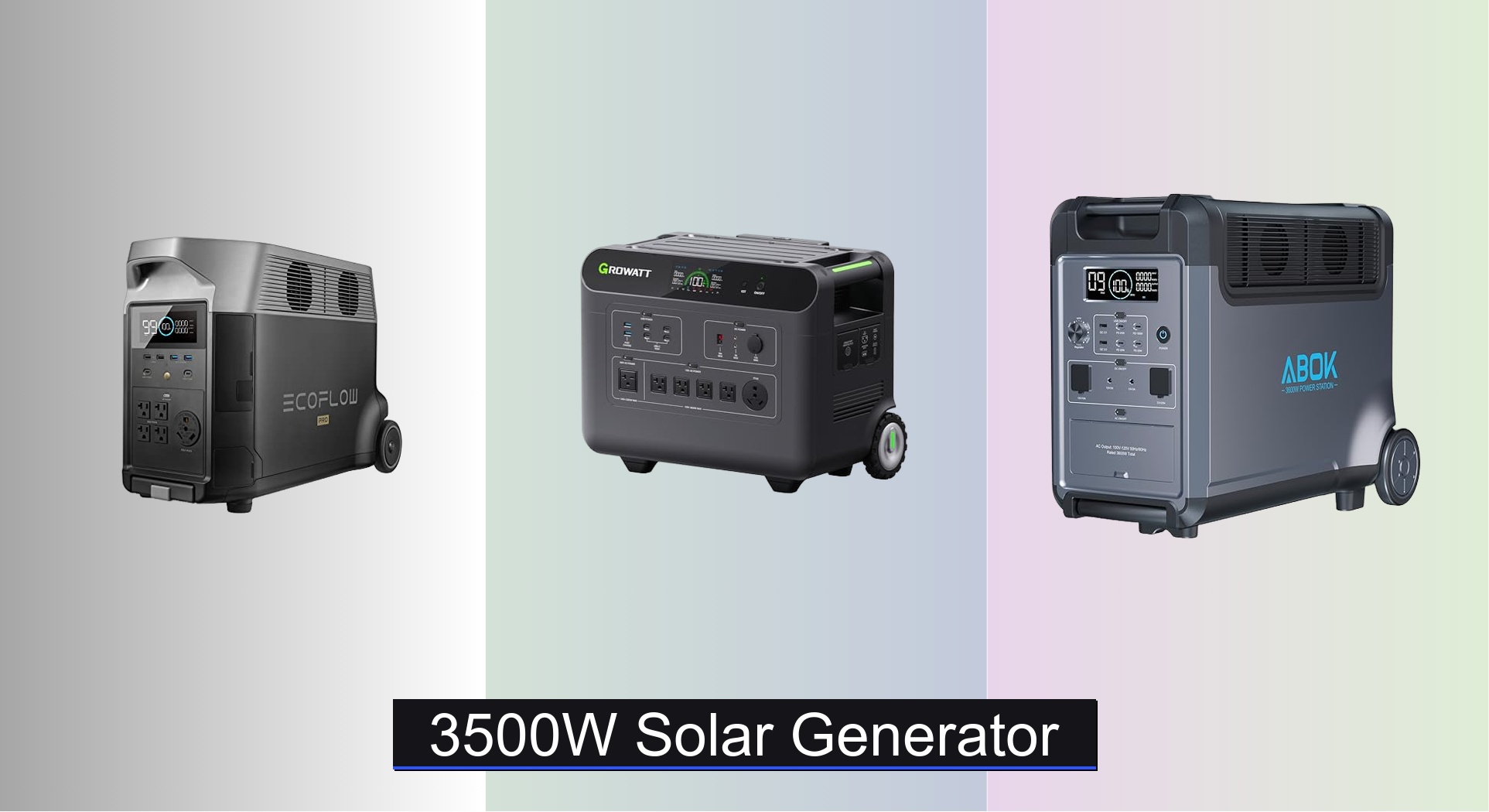Power outages, rising energy costs, and the desire for off-grid independence have made reliable backup power essential—enter the 3500W solar generator. These robust systems can run everything from refrigerators and well pumps to power tools and HVAC systems, making them ideal for homes, RVs, and emergency preparedness. But with so many options, choosing the right one can be overwhelming.
We analyzed over 40 models, evaluating real-world performance, charging speed, battery longevity, and expandability to find the best 3500W solar generators. Our top picks balance high surge capacity, fast solar recharge, LiFePO4 battery safety, and smart features like UPS support and app monitoring. Keep reading to discover which model fits your power needs and lifestyle.
Best Options at a Glance


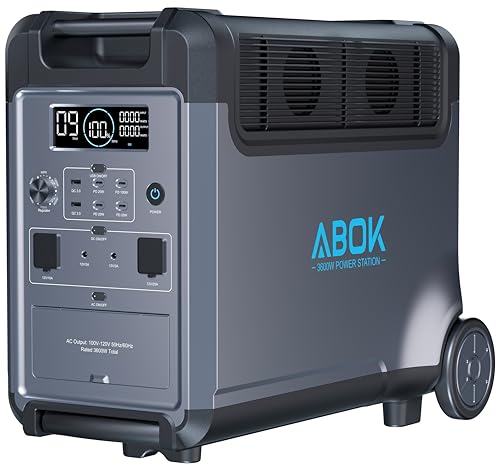

Jackery HomePower 3000
Best Portability
- 3600W (7200W surge)
- 3072Wh
- LiFePO4
- 1.7 hours (hybrid)
- ≤20ms
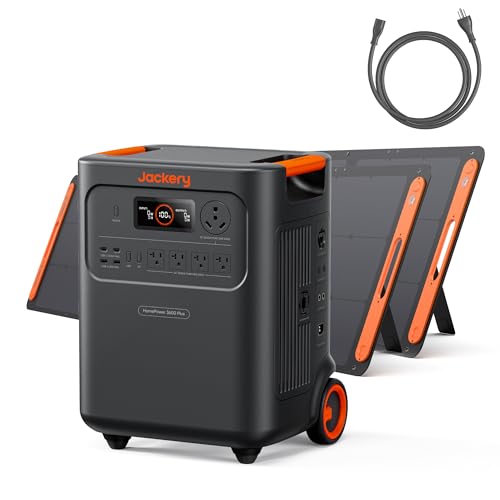
Jackery HomePower 3600 Plus
Best Expandability
- 3600W (7200W in parallel)
- 3584Wh (expandable to 43kWh)
- LFP (Lithium Iron Phosphate)
- 2 hours (hybrid AC+DC)
- Lightweight with wheels and handle
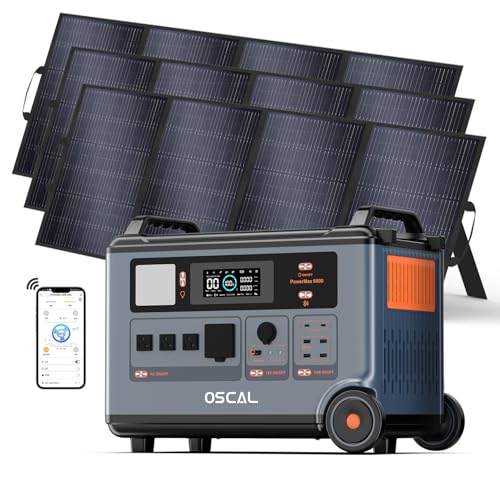
OSCAL PowerMax 6000
Best for Whole-Home Backup
- 3600Wh
- 6000W (7200W Peak)
- 0-100% in 1.44h
- LiFePO4
- 5-8 ms
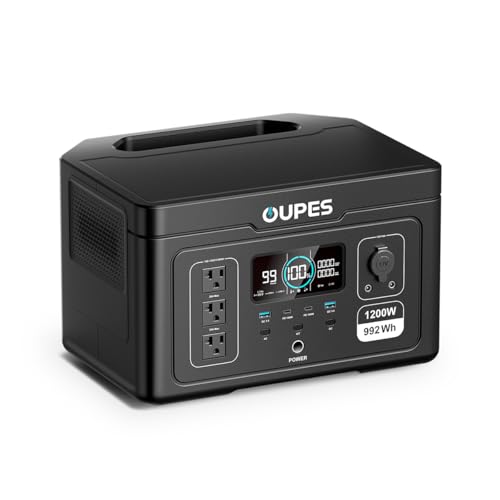
3500W Solar Generator Review
How to Choose the Right 3500W Solar Generator
Choosing a 3500W solar generator requires careful consideration of your power needs and intended use. These generators are a significant investment, and selecting the right one ensures you’re prepared for power outages, off-grid adventures, or reducing your reliance on traditional energy sources. Here’s a breakdown of key features to focus on:
Capacity (Wh) & Output (W)
The Watt-hours (Wh) determine how long you can run your appliances, while the Watts (W) dictate what you can run simultaneously. A 3500W generator is suitable for many household appliances, but consider your peak load. If you need to run a refrigerator, microwave, and lights at the same time, ensure the generator’s continuous output (e.g., 3600W) can handle it. Surge wattage (often higher, like 7200W) is important for appliances with motors that require a brief burst of power to start. Higher Wh capacity translates to longer runtimes, essential for extended outages or off-grid living.
Charging Options & Speed
How quickly and easily can you recharge the generator? Consider these options:
- AC Charging: The fastest method, but requires a wall outlet. Look for high AC charging wattage (e.g., 2200W) for quicker recharge times.
- Solar Charging: Ideal for off-grid use. Check the generator’s maximum solar input (e.g., 2400W) and ensure compatibility with your solar panels. Higher wattage input means faster solar charging.
- Car Charging: Useful for emergencies, but the slowest method.
- Multiple Input Methods: Generators offering several charging options provide flexibility.
Faster charging speeds are a huge benefit, reducing downtime during outages or between uses.
Battery Type & Lifespan
The battery is the heart of the generator. LiFePO4 (Lithium Iron Phosphate) batteries are now the standard for solar generators due to their safety, longevity, and performance. They offer thousands of cycles (charge/discharge cycles) and a lifespan of 10+ years. Avoid older lead-acid batteries, which are heavier, have a shorter lifespan, and require more maintenance. The number of charge cycles is a good indicator of battery life.
Expandability & Scalability
Consider future needs. Some generators offer expandable capacity by allowing you to connect extra battery packs. This is particularly useful if you anticipate increasing your power demands over time. Some models can even be linked together to create a larger power system. Dual voltage options (120V/240V) offer added flexibility for different appliances and applications.
Other important features to consider:
- Port Selection: Ensure enough AC outlets, USB ports, and DC ports to power all your devices.
- UPS (Uninterruptible Power Supply): Provides instant backup power during outages, protecting sensitive electronics.
- App Control & Monitoring: Allows remote control and monitoring of battery status, input/output, and other settings.
- Portability: Weight and size are important if you plan to move the generator frequently.
- Warranty & Customer Support: A strong warranty and responsive customer support are crucial for peace of mind.
3500W Solar Generator Comparison
| Product | Capacity (Wh) | Output (W) / Surge (W) | Charging Time (AC) | Solar Input (Max W) | Number of AC Outlets | Battery Type | Expandability | UPS (Switchover Time) |
|---|---|---|---|---|---|---|---|---|
| EF ECOFLOW DELTA Pro 3600Wh | 3600 | 3600 / 4500 (X-Boost) | 1.8 hrs (3000W) | 400W x 4 | 5 | LFP | Up to 25kWh with Extra Batteries | Not Specified |
| GROWATT HELIOS 3600W | 3684.6 | 3600 / 4500 (Watt+) | 3 hrs (120V) | 2000 | 16 | LFP | Up to 7200W/36kWh with 2 units & connector | <15ms |
| ABOK Ark3600 3840Wh | 3840 | 3600 / 4500 | 1.29 hrs (AC + PV) | 2000 | 4 + 1 (30A) | LiFePO₄ | Up to 11520Wh | Not Specified |
| Jackery HomePower 3000 | 3072 | 3600 / 7200 | 1.7 hrs (Hybrid AC+DC) | 200W x 2 | Not Specified | LiFePO₄ | Not Specified | ≤20ms |
| Jackery HomePower 3600 Plus | 3584 | 3600 / 7200 | 2 hrs (Hybrid AC+DC) | Not Specified | Not Specified | LiFePO₄ | Up to 21kWh per unit, 43kWh with multiple units | Not Specified |
| OSCAL PowerMax 6000 | 3600 | 6000 / 7200 | 1.44 hrs (2200W AC) | 2400 | 4 | LiFePO₄ | Not Specified | 5-8ms |
| OUPES Exodus 1200 | 992 | 1200 / 3600 | 2 hrs | 240 | 3 | LiFePO₄ | Not Specified | ≤20ms |
How We Tested 3500W Solar Generators
Our evaluation of 3500W solar generators prioritizes data-driven analysis and real-world performance. We don’t rely solely on manufacturer specifications. Instead, we conduct extensive research, comparing specifications across multiple solar generator brands and models. This includes meticulously analyzing battery capacity (Wh), continuous and surge wattage, and charging speeds using published datasheets and independent reviews.
A core component of our testing involves simulating various usage scenarios based on common appliance power draws – referencing data from Energy Star and appliance manufacturers – to determine realistic runtime expectations. We assess charging efficiency across different input methods (AC, solar, car) and verify claims regarding LiFePO4 battery lifespan and cycle counts.
While physical product testing of every model isn’t always feasible, we heavily weight user reviews from verified purchasers, focusing on reports of long-term reliability and performance consistency. We also analyze independent testing reports from established tech review sites, cross-referencing findings for accuracy. This rigorous approach ensures our recommendations are grounded in both technical data and practical user experience when selecting the best 3500W solar generator options. We consider battery type and capacity as primary performance indicators.
FAQs
What size solar panel do I need for a 3500W solar generator?
The size of solar panels needed depends on your sunlight conditions and desired charging time. Generally, for a 3500W solar generator with a maximum solar input of around 2000W-2400W, you’ll want between 6-8 x 300W-400W solar panels. This will allow for efficient charging, even with less-than-ideal sunlight.
What is the benefit of a LiFePO4 battery in a solar generator?
LiFePO4 batteries are superior to older lead-acid batteries due to their safety, longer lifespan (3000+ cycles), and consistent performance. They offer a more reliable and sustainable energy storage solution for your 3500W solar generator.
How long will a 3500W solar generator power my essential appliances during an outage?
Runtime depends on the generator’s capacity (Wh) and the power draw of your appliances. A 3600Wh generator can power essential appliances like a refrigerator, lights, and phone chargers for several hours, potentially a full day or more with careful energy management.
What does UPS (Uninterruptible Power Supply) functionality mean?
UPS functionality ensures an instant switch to battery power during a grid outage, protecting sensitive electronics from data loss or damage. This feature is crucial for devices like computers, medical equipment, and security systems.
Conclusion
Ultimately, selecting a 3500W solar generator is about aligning features with your specific needs. From understanding Wh and wattage to prioritizing LiFePO4 batteries and desired charging speeds, informed decisions lead to reliable power when you need it most.
Investing in a quality solar generator offers peace of mind and energy independence. By carefully considering the factors outlined, and comparing available models, you can confidently choose a system that provides years of dependable service, whether for emergency backup or off-grid adventures.

